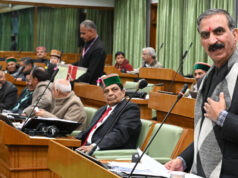After days of relentless efforts, the evacuation of stranded individuals in flood-affected areas is nearing completion. The state machinery, operating with unwavering determination, has successfully rescued a significant number of people, providing them with much-needed relief. With the evacuation process reaching its final stages, the focus is now shifting towards the challenging task of reconstruction and rehabilitation.
The state government, in collaboration with various agencies and departments, mobilized all available resources to ensure the safe evacuation of those affected by the devastating floods. The combined efforts of rescue teams, including relief forces personnel, police, and local administration, have been commendable. Their round-the-clock operations in treacherous conditions have demonstrated their unwavering dedication to protecting and serving the affected communities.
As the last of the stranded individuals find solace and security, the state machinery is now gearing up for the arduous task of rebuilding and rehabilitating the affected regions. Chief Secretary Prabodh Saxena, leading the charge, has directed department secretaries and Deputy Commissioners (DCs) from all districts to focus on the crucial phases of reconstruction and rehabilitation.
The first step in this process is to assess the extent of the damages and losses incurred due to the floods. Chief Secretary Saxena, during a meeting with officials, reviewed the situation in detail and urged them to provide accurate and comprehensive reports of the damages suffered by their respective departments. This information will serve as the foundation for effective planning and allocation of resources in the reconstruction efforts.
Restoring essential services is a top priority in the reconstruction phase. Repairing and rebuilding damaged infrastructure, such as roads, bridges, power lines, and communication networks, will be undertaken promptly to ensure the smooth functioning of daily life in the affected areas. The government has committed to providing the necessary financial assistance to expedite these efforts.
Additionally, rehabilitation measures are being put in place to support the affected individuals and communities. Temporary shelters, equipped with basic amenities, have been established to provide immediate relief to those who have lost their homes. The state government, in coordination with relevant departments, is also working to ensure access to healthcare, food supplies, clean water, and sanitation facilities in the affected regions.
The reconstruction and rehabilitation process will require a collaborative approach involving government bodies, non-governmental organizations (NGOs), and the active participation of the local communities. Chief Secretary Saxena emphasized the importance of transparency, accountability, and community involvement in this phase. The goal is not just to restore what was lost but to build stronger, more resilient communities that can withstand future challenges.
As the state machinery shifts gears from rescue and evacuation to reconstruction and rehabilitation, the spirit of unity and resilience displayed by the people of the state will be instrumental in overcoming the aftermath of this natural calamity. The government’s commitment to supporting and empowering the affected communities, coupled with the indomitable spirit of its people, will pave the way for a brighter future.
While the road to complete recovery may be long and challenging, the determination and collective efforts of the state machinery, along with the support of various stakeholders, will undoubtedly bring about the transformation and renewal that the affected regions deserve.















